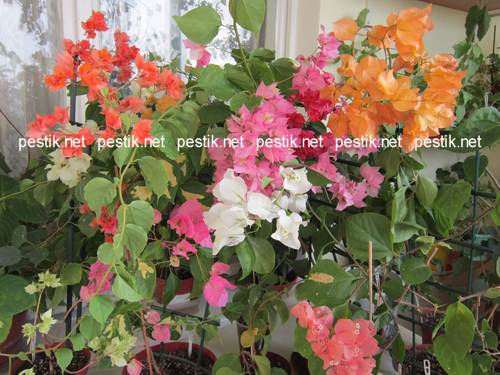
Flowering and non-flowering houseplants. Photos and names of non-flowering indoor plants
Today we will try to figure out with you why some indoor plants do not bloom. And it seems like you love some kind of flower, fiddling with it, rushing about - but it does not bloom and that's it! From other people, take, for example, Valya's neighbor on the landing - they bloom like crazy, and ALL the flowers. And interestingly, it does nothing special for this. She doesn’t read books on plant care, she doesn’t even have the Internet, the earth is ordinary, she dug up under a tree, there is no additional lighting, but they bloom!

Let's now look at the most likely reasons why your flowers do not bloom. Of course, it is difficult to take everything into account in one article, but let's try ...
First. What is the most important thing for plants? That's right, lighting! Everything flowering plants they just need good lighting.
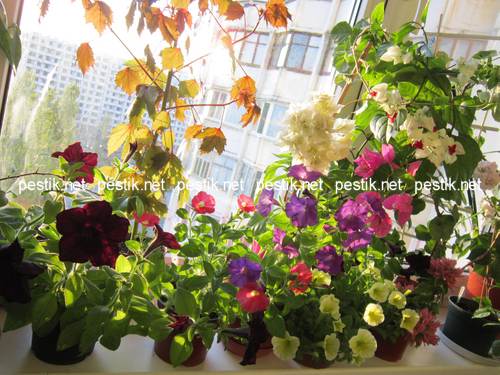
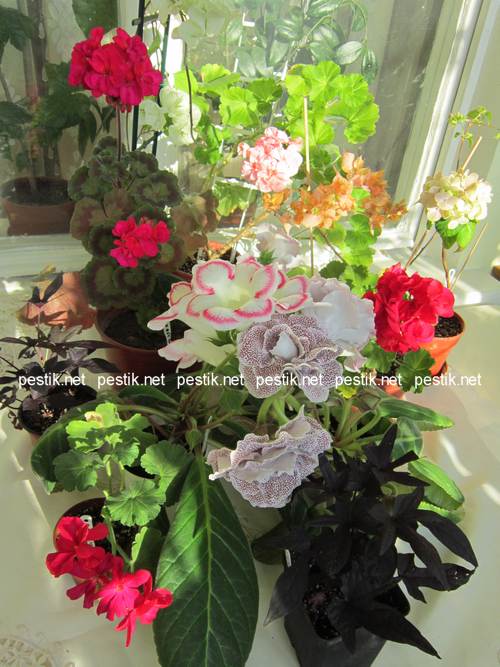
If you have a north side, then many ornamental plants they will not be able to bloom, or their flowering will be meager and inconspicuous. The same if your plant is somewhere in the middle of the room and does not receive the sun at all.
How to change the situation? There is salvation! Fluorescent lamps, additional lighting can remove the lack of sunlight. For many collectors, due to lack of space, plants grow on shelves in conditions of artificial lighting, their flowers have never seen the sun, but at the same time they bloom gorgeously.
It is necessary to take into account the length of daylight hours, this is in the region of 10-12 hours.
Second. We have light .. good. What is the plant planted in? This factor is one of the most important and is important not only for flowering, but also for the growth of the plant, its vital activity. When planting a plant, it is necessary to take into account the pH (acidity of the soil). Strongly acidic - pH 3-4; acidic - pH 4-5; slightly acidic - pH 5-6.5; neutral - pH 6.5-7; alkaline 7-8. If you have a plant that requires acidic soil, it will be planted in alkaline - good growth, and even more so, there will be no flowering. The plant will wither.
For example, such plants as camellia, gardenia need acidic soil. They won't grow in clay! But gloxinia, jasmine, pachistachis, saintpaulias, fuchsias, anutruim, campanula, clerodendrons are slightly acidic.
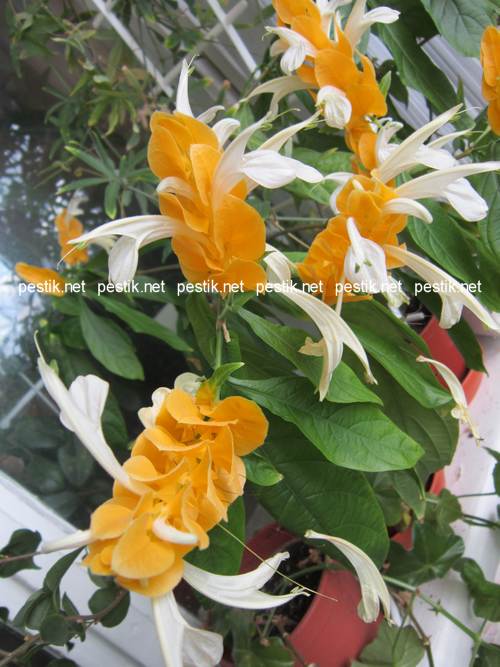
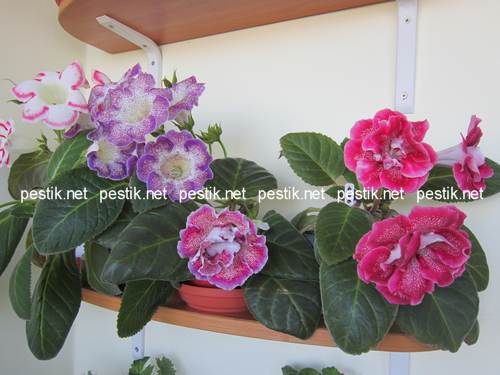

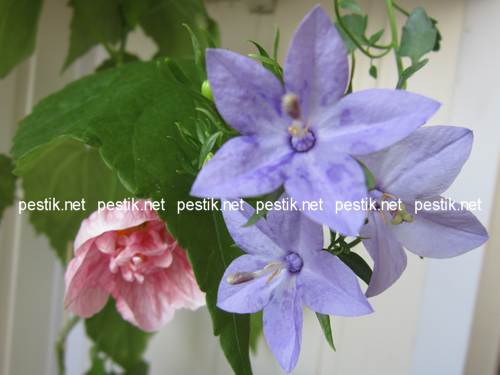
Zamioculcas, lemon needs neutral soil. Figs and myrtle - slightly alkaline. But adenium is alkaline.
From the experience of communicating with plants, I noticed that a slightly acidic soil is needed for most plants grown in a room.
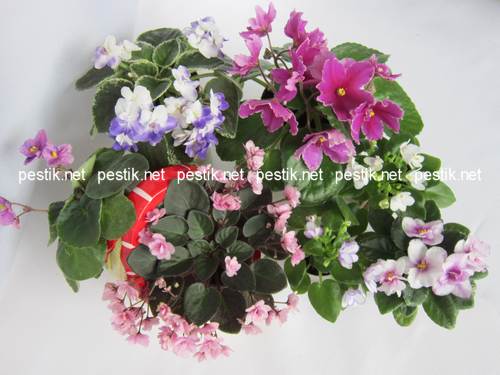
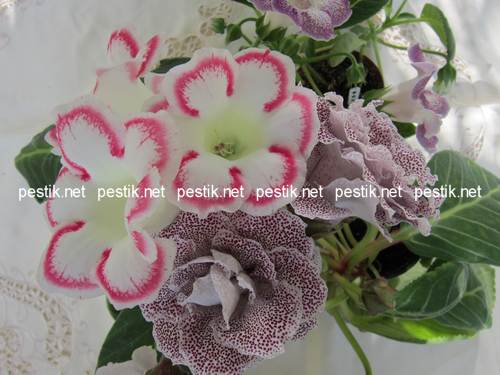
And now the important thing! Soil acidity changes over time. And mostly in the direction of alkalization due to hard water and fertilizers. Therefore, periodically, watering your pets who love an acidic environment - add citric acid to the water (calculation of 1 g per 1 liter of water).
Also, when buying soil mixtures in stores, do not pay attention to marketing and advertising names “for Ficus”, “for Violets”, “for Pelargonium”, etc.
Read the composition and acidity on the back of the package - and your plants will be happy. Properly selected soil is the key to good growth and well-being of the plant.
Third. Now let's see what your pets live in. Many people make a big mistake when planting plants in spacious pots. With such a planting, when the pot is very large, the plant builds up the root system, then the tops and only then blooms. It also happens the opposite, when the pot is, well, very cramped. Although in my practice, plants that live in cramped dishes bloom faster.
Incorrect planting, root damage is one of the main reasons for the lack of flowering in indoor plants and sometimes even death. What I call improper planting - I will now explain using the example of such a wonderful plant as panicled muraya.
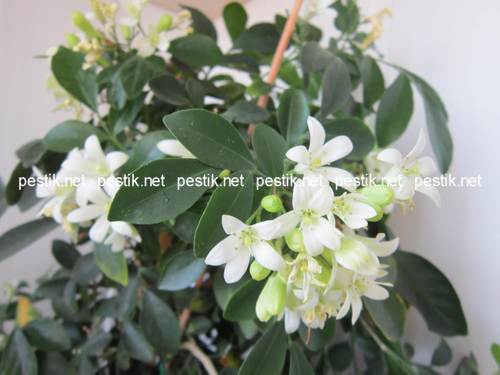
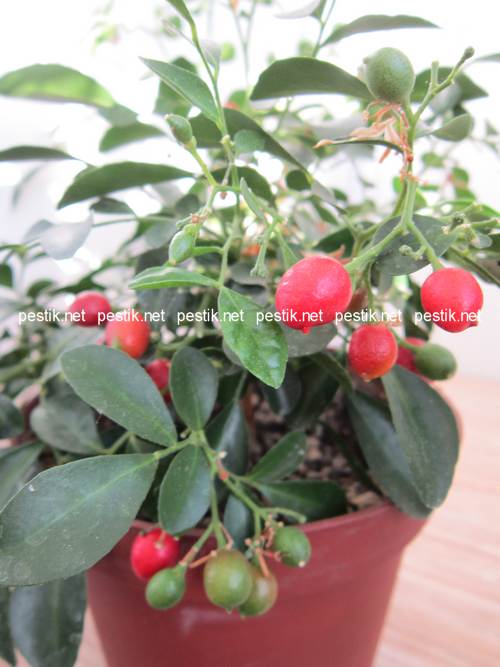
Many make a mistake when planting, which often becomes fatal for the plant. Muraya paniculata cannot bury the root collar. When deepened, the plant begins to wither and hurt, it is no longer up to flowering.
Also, transplants of many plants with the exposure of the root system, its washing - can be disastrous. Transplanting at the wrong time of the year in late autumn-winter without additional conditions such as lighting can disrupt the well-being of plants.
Fourth. Many people ask, “Is there such a flower that would bloom all the time, all all year round? I need a flower like this!" Let's make an analogy. Does nature rest in winter? Yes. Does the person need rest? Yes. Is our heart resting? Yes! Those who doubt that the heart beats all the time and works without a break - let them remember the physiology: the heart muscle also rests and quite often, only in small portions. So, plants also need a dormant period and they have it. During this period, which may be in cool conditions, or limited, almost dry content - the plants rest. But, when all conditions are met, you can enjoy very bright and lush flowering. I will give examples. It is desirable for royal pelargoniums to arrange a cool wintering, during this period flower buds are laid. By limiting the watering of the thomson's clerodendrum, up to the point that strong leaf fall begins, you will achieve abundant flowering. Hippeastrums are also kept on a “dry diet” and are not watered until the flower arrow appears.
If the dormant periods are disturbed in plants, then with their “non-flowering” they signal this!
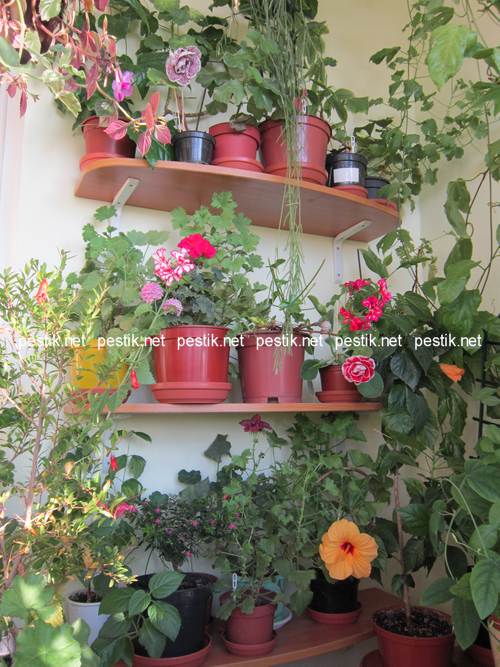
Fifth. Fertilizers! You will now say, yes, I feed my plants hoo! I add the compost brought from the village to the ground, I insist the eggshells on the water ... the leaves are so loppy! Yeah, loppy, the leaves of your gloxinia are the size of a large male palm. Your plants are thriving! They are overfed with nitrogen, and for flowering they need something completely different - fertilizers with a high content of phosphorus and potassium.
Or the reverse situation. A person firmly believes that it is not necessary to feed plants planted in store soil, since fertilizers are already there. Where is the fertilizer? And here are these little white grains. I take a closer look - and then the usual baking powder, perlite or vermiculite. The owner of the plants thought it was fertilizer.
Based on this, everything should be in moderation. And the lack of fertilizer is bad, and overfeeding.
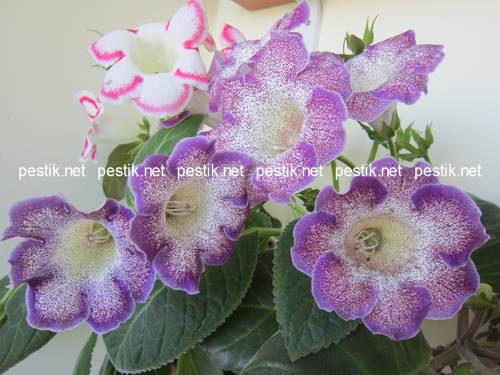
sixth. Pests... yeah, you can't get away from them. When buying plants from a greenhouse, 90% of the time that some new pest will appear for you. No need to be scared and faint from them. The best remedy is to acquire new plants, put them in quarantine, separately from other plants and treat them with insecticides for prevention. If you have more than three plants at home, you should always have fitoverm and actara at least at home. When affected by pests, the plant cannot flourish normally. Or, if the pest did not have much time to take care of it, it can bloom, but then it will begin to lose both buds and flowers.
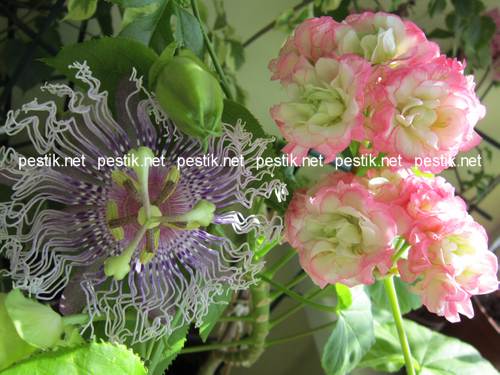
seventh. Many of us live in apartments with dry air. Often this factor is the reason for the lack of flowering in indoor plants. Many are saved by spraying. But if you spray a plant standing on the windowsill next to the battery, the benefits of such spraying are doubtful. Humidifiers are an alternative. Also, plants can be placed on trays with water, wet pebbles and sprayed away from batteries. I also want to note that dry air contributes to the appearance of a spider mite, which will certainly spoil the buds that have appeared with its vital activity. Therefore, we read paragraph six, and moisturize!)
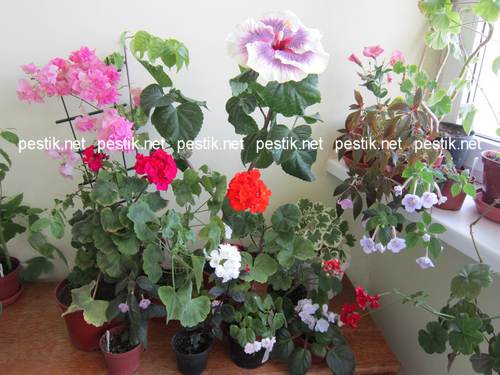
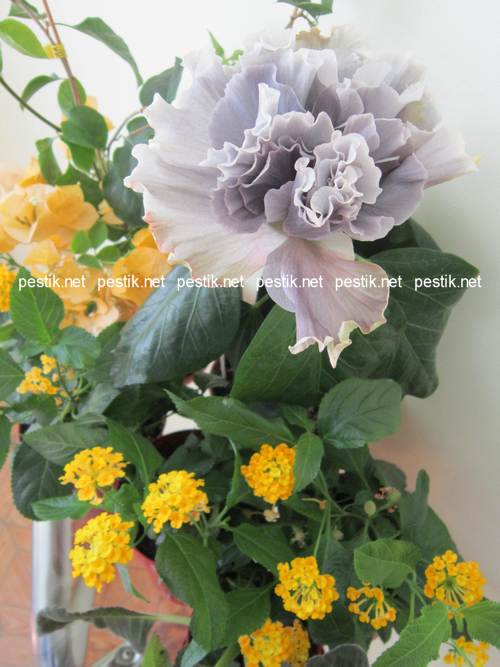
eighth. Incorrect pruning can also delay flowering - temporarily or permanently. For example, there are plants that bloom on old shoots. If we form a beautiful bush, a tree all the time, we will cut off the shoots on which flowers should appear and naturally we will never see flowers. Therefore, you need to decide for yourself what you want first of all more - a beautiful crown, the skeleton of a plant or flowers.
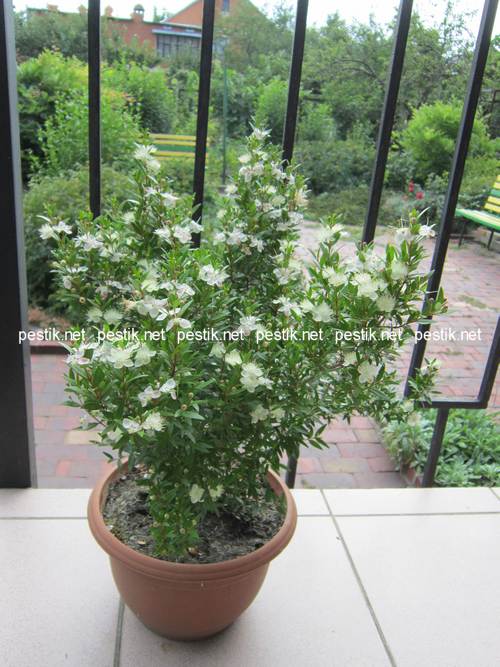
ninth. Impatience! Novice flower growers are very impatient, give them everything at once. There are plants that do not bloom in the first year of life, it takes time to grow roots, branches, etc. For example, citruses can bloom in a freshly rooted cutting, but they can normally bear fruit, without risk to life, the plant can only grow branches of the fourth or fifth order.
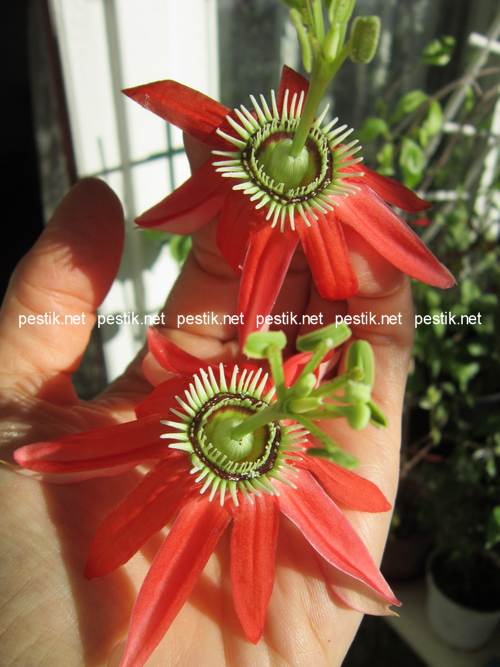
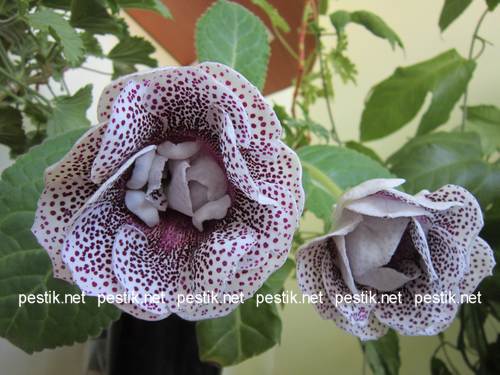
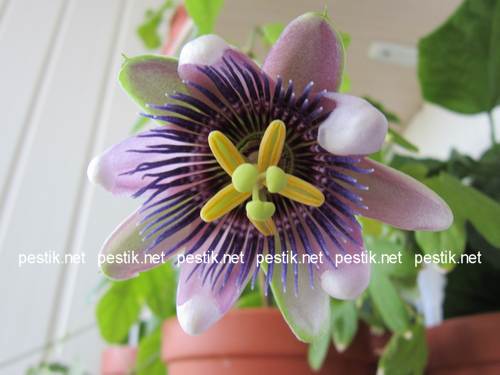
tenth. Compliance with the correct agricultural technology! In principle, this is all that was mentioned above. Improper watering, overflowing, underfilling, overfeeding, underfeeding, non-compliance with dormant periods, poor lighting can affect flowering. Here is an example: a plant grows for itself, they love it, cherish it, feed it with fertilizers, it stands all green and beautiful without flowers. And why should she bloom, she already lives well. And then suddenly they stopped feeding or give little to drink ... cold, hungry !!! It is urgent to give offspring until they are killed - the plant decides and blooms. And that's all we need!
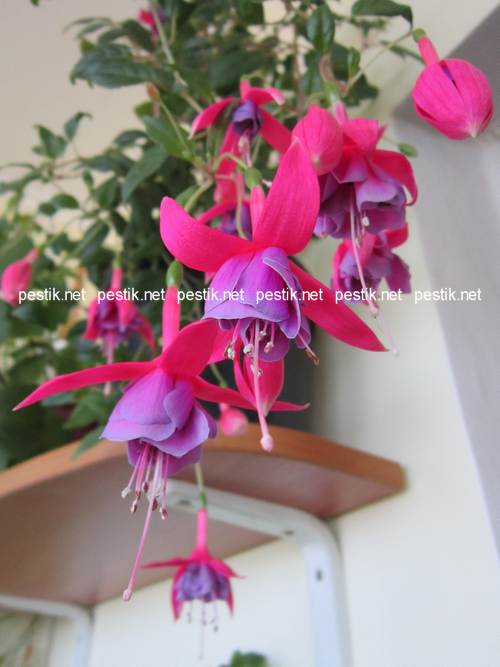
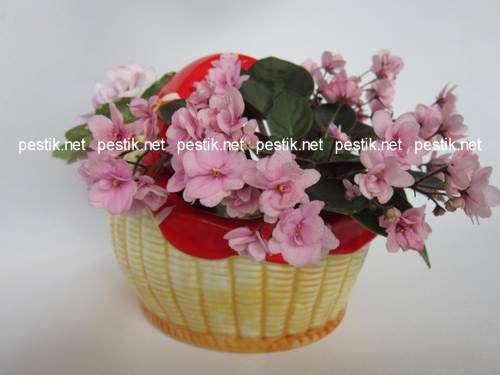
Victoria Didenko
21.09.2017
In office premises, and in many housewives at home, you can often see non-flowering indoor plants. They are also purchased by people who have an allergic reaction to pollen. Unlike, non-flowering ones do not require special care and are considered less whimsical. The simple care of these plants will give the room an original look and create an excellent microclimate in it.
Non-flowering indoor plants: photos and names
ficus
One of the most interesting representatives of non-flowering plants is considered indoor ficus. Surely, those who were lucky enough to relax in any Mediterranean country saw great glossy leaves on interesting spreading trees. The indoor version of the ficus also looks very elegant.
In nature, there are many species of this plant, there are approximately 20 indoor varieties. The most famous is considered rubbery ficus, which is rightfully considered a long-liver and, with proper care, can please the inhabitants of the home for about 50 years.
Irreplaceable home amulet - Money Tree
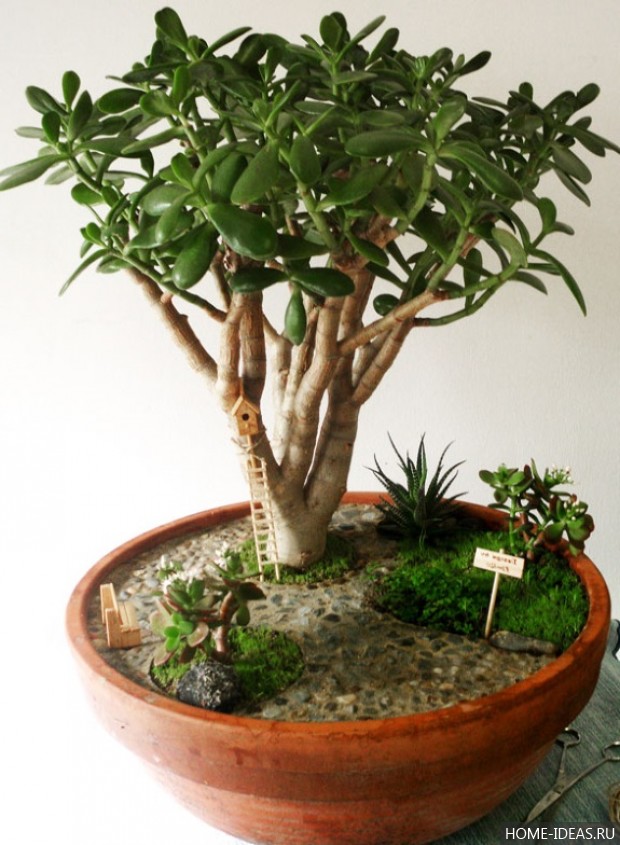
This plant has several titles- monkey tree, fat woman, or the popular well-known "money tree". According to popular rumor, his presence in the house contributes improvement of financial situation. The location is very important for him - the plant will feel comfortable in a bright place in the southeastern part of the dwelling. In summer, the fat woman needs to be watered more often, and dust must be removed from the fleshy leaves.
Dracaena
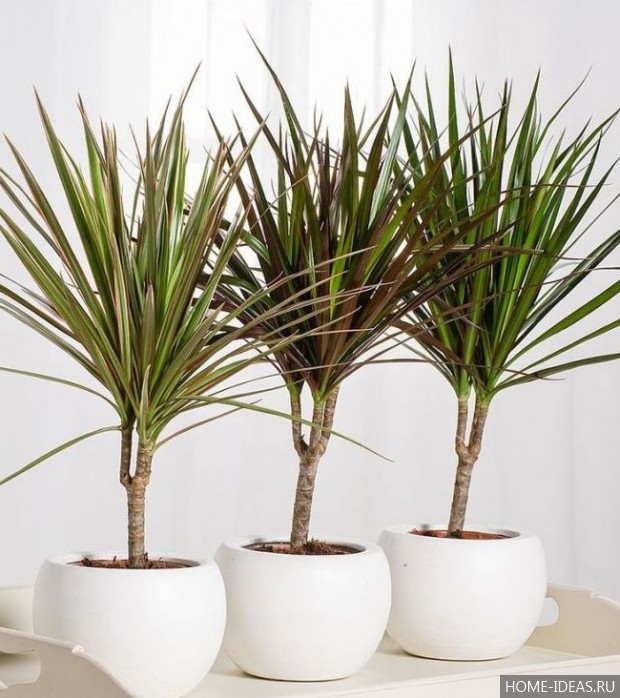
resilient and pretty hardy is a plant, or as it is popularly called - dragon tree. She feels comfortable in partial shade, grows very slowly. Brown tips on leaves indicate overexposure. dryness in the room.
The advantages of dracaena include its ability to purify the air from formaldehyde.
dieffenbachia
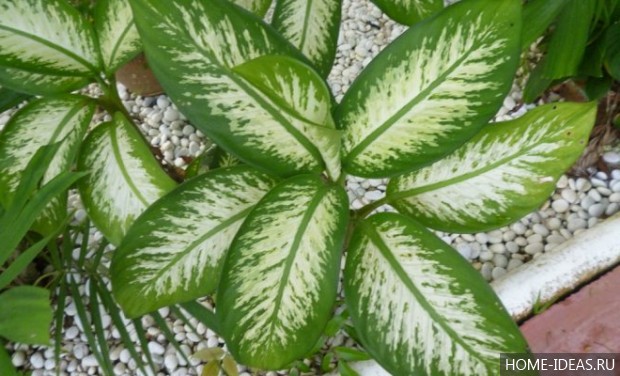
Among non-flowering houseplants, photos and names of which are presented here, Dieffenbachia can be especially distinguished. This tropical tree sometimes it can grow up to 2 m in height.
The plant is very beautiful, but dangerous due to the content of poisonous juice in the leaves. Therefore, it is undesirable to grow it in homes where small children live.
exotic monstera
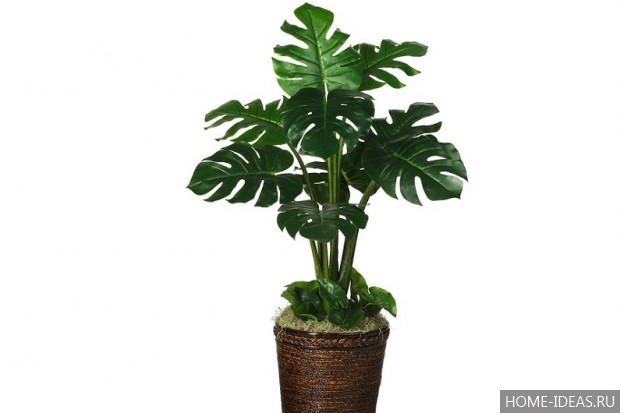
This plant has a fairly high stem with umbrella plants located on it. big leaves. Its presence in any apartment significantly enriches the apartment with oxygen and ozone. It is undesirable to put it where there is a possibility of direct sunlight. Also, don't forget spray regularly her cold water.
As is known, appearance and the condition of indoor plants in most cases indicates the microclimate and the condition of the room in which they are located. Indoor plants not only create a certain psychological atmosphere, but can help maintain humidity, air conditioning, not to mention their importance as part of interior design. The variety of indoor plants today is truly amazing, sometimes it is not at all easy to understand all their features and care requirements. Regardless of their type, genus and variety, all houseplants without exception need our care. Sometimes people are allergic to pollen, and then you should choose non-flowering indoor plants. Manifold non-flowering indoor plants will create a unique design of the premises, and a good indoor climate.
Here is a short list plants, that don't bloom.
Calamus has beautiful xiphoid leaves.

Chlorophytum
Which releases a large amount of phytoncides, and due to this, has a bactericidal effect. Placing chlorophytum in a hanging basket will look especially impressive.
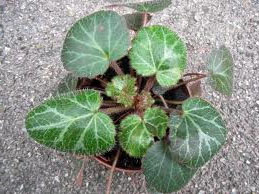
Saxifrage
Usually grown in hanging pots. The saxifrage is very elegant and is sometimes used as a groundcover, although it may well serve as a unique detail in the interior of any room.
Can be divided into flowering and non-flowering (including ornamental). Both species are represented by a huge variety of species. Let's consider some of them in more detail.
Flowering houseplants are, for example, poinsettias, which bloom in winter. It does not need careful care, so it will not bring you any extra trouble. This plant can be purchased already planted or cuttings. A potted poinsettia can be kept in a window, in close proximity to sunlight, or in a more distant place, in the middle of a room. The top of the plant is decorated with bracts of bright color with small flowers located in the middle. During the flowering period, the poinsettia should be watered twice a day, as it is too high for it in winter. From the moment when the large upper leaves begin to die, the flower must be cut by one third, removing the fading leaves. During this period, the poinsettia should be plentifully watered and fed. After a few weeks, during the dormant period, the amount of water should gradually decrease so that the soil dries out and easily separates from the edge of the pot. The poinsettia will temporarily have only bare branches. The flower needs to be moved to a cool place, and by the end of December it will return to its usual form.
Rooms in winter are also represented by cyclamen. More precisely, the period of its flowering begins from the beginning of winter to mid-spring. This plant does not like light, so it is best placed in places with minimal lighting. Cyclamen is easy to grow from seed.
How to properly plant these flowering houseplants? We fill the pot with peat soil, and pre-prepare the seeds by flooding them with water for a day. They should be placed on the surface of the soil, sprinkled quite a bit with a peat mixture. Seeded cyclamens should be covered with clingfilm and light exposure minimized with dark paper. Every day for forty days, the flowers must be aired, then covered again from above. When the first sprouts appear, the dark paper can be removed. When flowering houseplants sprout, they are transplanted into separate pots. They will bloom in a year or two. The dormant period from flowering in cyclamens begins in the summer.
Flowering indoor plants are inconceivable without azalea. It decorates an apartment or office space throughout the winter period. Experts advise to purchase an already planted and flowering plant. To keep it as long as possible, proper care is needed. To do this, the flower should be watered daily and kept in close proximity to the light, for example, on the windowsill, while protecting it from direct sunlight. At the beginning of summer, you can use cuttings: cut azalea branches and transplant them into slightly acidic soil. In this case, they should be watered abundantly and sprayed often.
Non-flowering houseplants have a variety of leaf shapes and colors. One of the representatives of this group is ficus, which is quite unpretentious in its care. Plants with variegated leaf color need bright sunlight, and green plants need subdued lighting. In order for the ficus to take root, it is enough to plant it in loose and permeable soil. Once a year, the flower needs to be transplanted into a large container. Reproduction occurs by cuttings, and the most favorable time of the year for it is spring or early summer. Do not forget about caring for a flower, which periodically needs to wipe the leaves or sprinkle them with water. In the cool autumn-winter period, some leaves begin to crumble. To maintain the shape of the plant during the summer, pruning is necessary.
Other types of non-flowering plants are also: araucaria, cypress, asplenium, aspidistra, pakhira and many others. Choose your favorite varieties and decorate your living space not only in summer, but also in winter!
Non-flowering houseplants are usually bought for office space. Although, on the other hand, some housewives also like those representatives of the flora that do not bloom. They are less whimsical and do not need such careful care. But still there are some subtleties of growing and caring for them.
Money tree - assistant in business
A striking example is the monkey tree, which is popularly called " money tree". This houseplant can be seen in many apartments. After all, it is precisely this that has an unpretentious character. In addition, there is a belief that the money tree helps to improve the financial situation in the family.
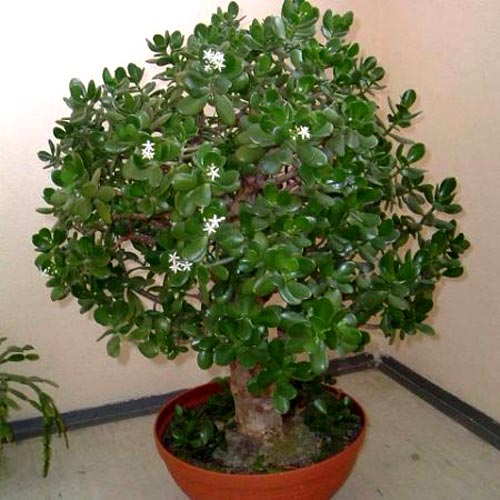
The main thing is to choose the right location. According to feng shui, a well-lit area of wealth on the southeast side of the apartment is suitable for him. It is better to grow a tree yourself from a shoot, planting it in the ground for cacti, but universal soil is also suitable. The plant is very fond of light, but not direct rays. In summer, fairly frequent watering is needed, but still not allowing excessive moisture, and ventilation. Winter for a fat woman is a period of rest, it should not be watered often. Transplant every 2-3 years. And do not forget to wipe the dust from its fleshy leaves.
By taking proper care of the money tree, you will ensure that its leaves are fleshy. And the better the plant looks, the more successful things will turn out at work.
Dieffenbachia - care rules
Among non-flowering houseplants, dieffenbachia can also be distinguished - a tropical plant up to 2 meters high. The flower is really very beautiful, but a little dangerous.
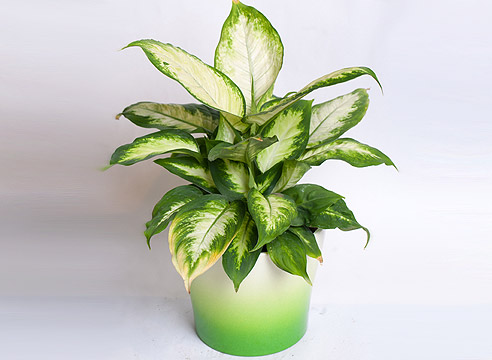
If you transplant it, make sure that poisonous juice does not get on the skin and mucous membranes. In general, it is undesirable to grow in homes where there are small children and pets. If you have this plant, then you should put it away from curious pets.
The plant is light-loving, requiring spraying, airing the room, moisturizes and purifies the air in the apartment from bacteria and chemical contaminants. Requires special soil for dieffenbachia, does not like drafts.
Dragon tree - dracaena
Also special attention deserves the so-called dragon tree. This is a very hardy, hardy plant. There are many types of it for different tastes.
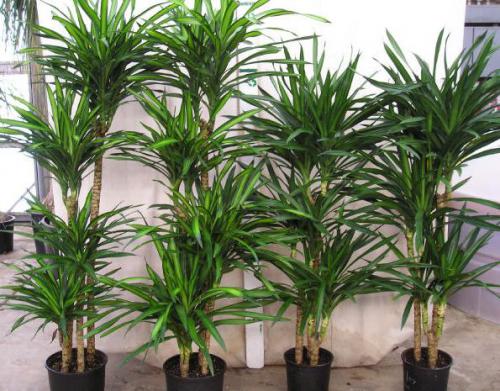
In general, dracaena is easy to care for. You are required to respond in a timely manner to the appearance of brown tips and edges of the leaves. This is due to the fact that the air in the room is too dry. The dragon tree also purifies the air of formaldehyde. It grows slowly, requires only timely watering, ideally top dressing, lives better in partial shade, tolerates the heating season quite well, but better flower still spray.
Your home ficus
In this article, I would like to pay special attention indoor ficus. This plant is popular in Mediterranean countries. Probably, many have seen these sprawling trees with glossy large leaves at resorts.
Its room version looks very advantageous - in our climate, ficus, unfortunately, can only survive at home, since it is very thermophilic.
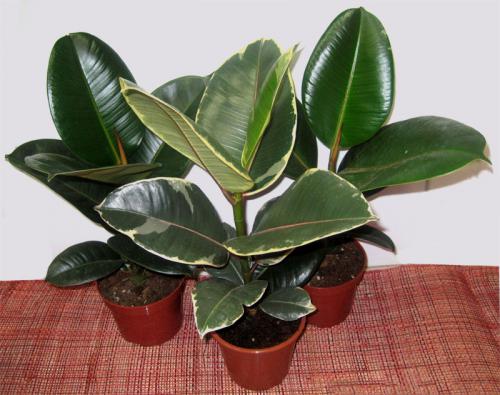
For some time this plant was undeservedly forgotten, but again became popular. And not without reason, because according to popular belief, ficus contributes to the appearance of a long-awaited child in the house, and for Buddhists it is generally a sacred plant.
In nature, there are many species of these wonderful plants, but about 20 varieties can be considered indoor. Among them, rubber-bearing ficus stands out especially favorably. At proper care it can please your family up to 50 years. The rubber-bearing ficus is photophilous, has leathery, shiny, tight leaves that contain white milky juice containing about 20% rubber, from which it got its name. But in order to form nice shape this miracle requires shaping pruning, preferably in winter. In summer, the ficus can be taken out to the balcony, and it will only become more beautiful from this.
Monstera - exotic flower
And finally, I want to talk about the monster. This non-flowering indoor plant with large umbellate leaves on a tall stem can improve the microclimate in the apartment by enriching it with ozone and oxygen. It will be appropriate in the corridor and in the kitchen and in the living room, they love it in office halls and spacious rooms.
Just do not forget that the monstera should be sprayed and not placed in direct sunlight. At the same time, Monstera moisturizes the air well and has the ability to have a beneficial effect on people suffering from nervous disorders, has mystical properties to reduce negative impacts and attract positive energy to your home.
The choice of flowering and non-flowering plants is great, it remains only to choose a houseplant that is right for you.